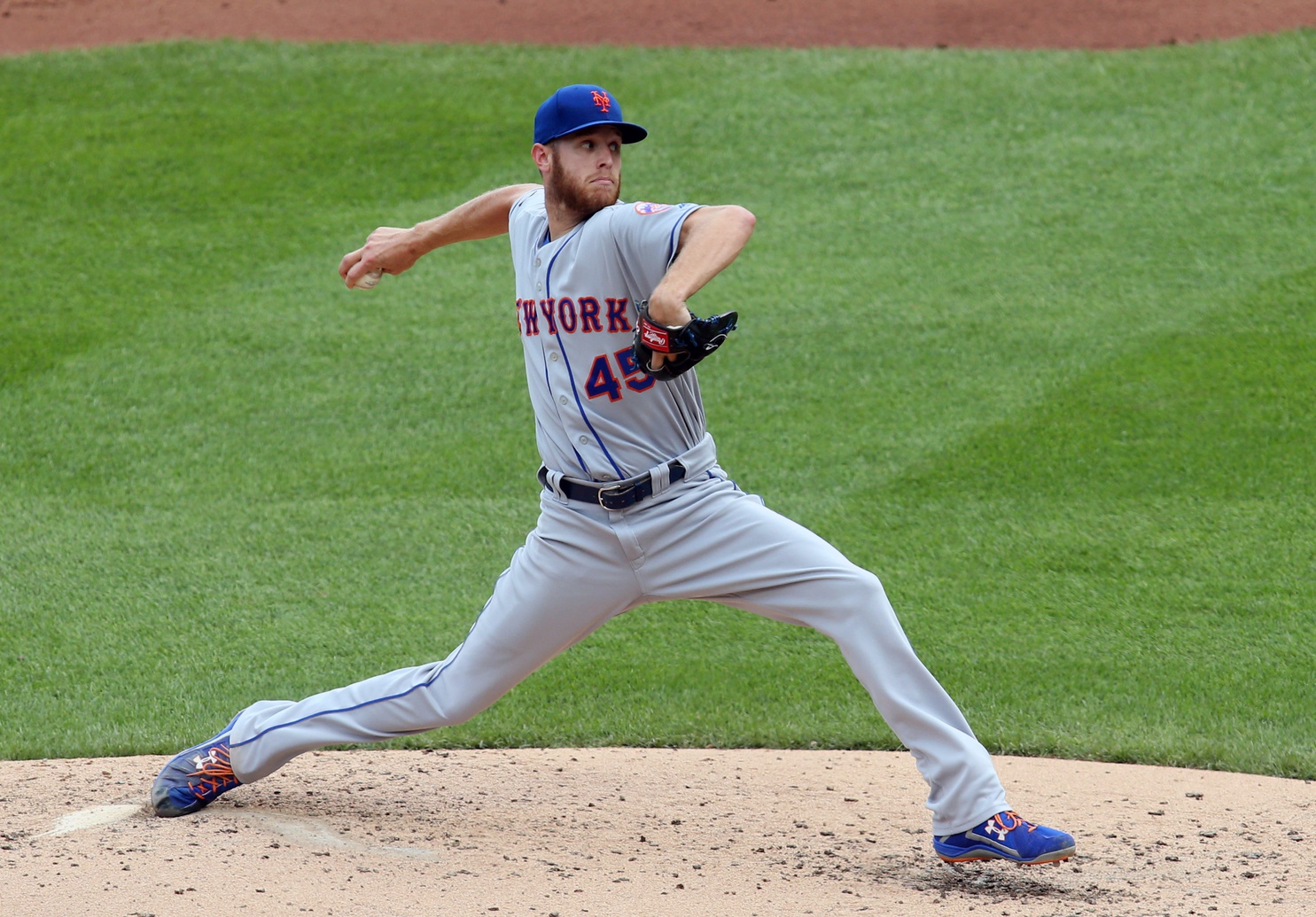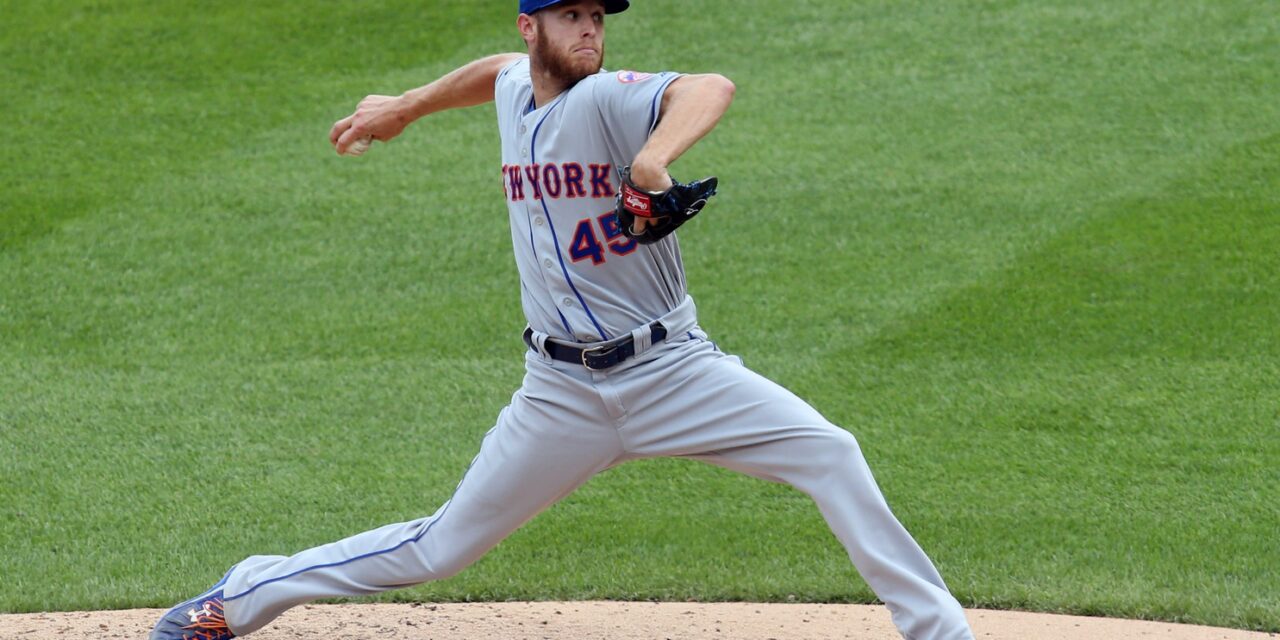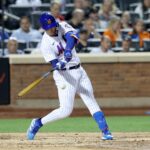
For a team like the New York Mets, who enter Monday’s action with a 49-66 record while fighting to stay out of the National League East basement, it’s important to find something to be positive or feel good about.
That’s really hard when it seems like something disappointing happens every day. But still, it’s good to find something to be happy about — even if it’s for a couple seconds — before getting depressed again about this season (and last season, and probably this winter, and so on).
One of the attractive qualities about bringing on Mickey Callaway as manager was his experience as the Cleveland Indians’ pitching coach during their recent run of success. After all, the Mets rebuilt their club around young and talented starting pitchers, so it would make sense to maximize what has typically been their greatest strength. Plenty of things have gone wrong in 2018 as Callaway is making the rough adjustment to life as a skipper, but after finishing the 2017 season with baseball’s fourth-worst rotation ERA (5.14), they’ve seemingly bounced back rather nicely.
Here’s a quick look at how the offense, starting rotation, and bullpen have performed since the start of last season.
| Year | Offense wRC+ | Offense fWAR | Rotation ERA | Rotation fWAR | Bullpen ERA | Bullpen fWAR |
|---|---|---|---|---|---|---|
| 2017 | 100 | 21.5 | 5.14 | 8.8 | 4.82 | 1.2 |
| 2018 | 89 | 7.5 | 4.04 | 11.4 | 4.77 | -1.1 |
As mentioned before, just ignore the left and right side of the above table for a second and just look at the middle. That makes me happy before shaking my head in disbelief that the rest of this roster can’t properly support them.
The Mets have sent 12 different hurlers to the mound to start a ballgame this year, but that number goes down to seven when looking at those with at least five starts (and already three with 20-plus starts, which is an improvement from last season, which featured just two).
Top-Heavy Production
There’s no secret where most of the Mets’ rotation production has come from. Jacob deGrom, Zack Wheeler, and Noah Syndergaard have combined for more than 60.0% of total innings thrown and their combined fWAR (11.5) is actually greater than the that of the entire group put together.
Unfortunately, most of the time we talk about deGrom, it revolves around how New York’s offense can’t get him any damn run support. There’s literally no other way to explain why a pitcher is leading all of baseball with a 1.77 ERA and is the owner of a 6-7 record. His 5.8 fWAR is already a new single-season career high, and he’s on track to set new personal bests in strikeout rate (30.7%), SIERA (2.94), infield-fly rate (16.2%), and soft-hit rate (25.1%).
Wheeler has been on another level since June 1, and he’s been so good for so long that his slow start has been erased in the overall stats. There’s been a lot of focus on the right-hander’s average four-seam fastball velocity of 95.7 mph (which is on pace to be a career high), but he’s throwing it at just a 57.1% clip, which would be the lowest of his young career.
Syndergaard has once again dealt with injuries and sicknesses that have needed multiple trips to the disabled list. When on the mound, though, the 25-year-old has been productive. His current 24.9% strikeout rate isn’t where we’re used to seeing it, but he’s still limiting walks (4.7% rate) and has improved his quality of contact numbers by a lot — his 24.4% soft-hit rate and 22.4% hard-hit rate are easily on track to be new career highs.
This trio is collectively making $12.3 million this season. According to FanGraphs, their production has been worth a total of $91.6 million. Well, then.
Some Depth Appears…
Steven Matz couldn’t get away from his yearly trip to the disabled list this season, but he’s still taken positive steps in his development on the mound under Callaway and pitching coach Dave Eiland‘s watch. Although the southpaw had a rough month of July before heading to the shelf (6.07 ERA in 29.1 innings), he put together a solid first half prior to the All-Star break.
In 96 innings of work, Matz twirled a 3.38 ERA and .318 wOBA allowed with a 20.9% strikeout rate and 9.1% walk rate. He’s not making hitters chase nearly as much — his 22.6% chase rate is on pace to be a career low, decreasing for the third consecutive year. He’s also cut down on his curveball usage (23.2% in ’17, 16.8% so far in ’18) in favor of throwing his changeup and slider with more regularity, which have both improved in quality.
Of all the inexperienced arms that made their respective debuts in 2018, it looks like Corey Oswalt is the one that could end up being an actual rotation option for the Mets, specifically in the near future. The right-hander’s last five starts in particular stand out — he’s completed at least five innings each time and has put together a 3.86 ERA, 4.24 SIERA, 17.6% strikeout rate, 5.6% walk rate. And most importantly, the right-hander has limited hard contact to just a 23.5% rate while inducing grounders at a 51.9% clip.
Seth Lugo has been mostly a vital piece to Callaway’s underperforming bullpen, but he’s still shown off his value as a starter by taking the bump five times and compiling 0.3 fWAR and 3.91 ERA in just 23 frames. The most eye-popping part of Lugo’s season, though, is the spike in curveball usage. After throwing it at a 17.4% clip in 2017, that number has climbed all the way up over 30.0% in 2018. He’s limited opposing hitters to a 27 wRC+, .037 ISO, and .195 wOBA with that offering (86 wRC+, .076 ISO, .289 wOBA last year).
With most of the bullpen being unreliable, Lugo is of best use to the Mets as a reliever, but he’s more than a worthy swingman when a spot start or two is needed — as we saw when Syndergaard hit the DL the first time.
…And Some Dead Weight That Should Go
Well, this isn’t much of a surprise.
What the Mets have produced overall as a rotation is actually quite impressive when considering it also includes Jason Vargas‘ 8.75 ERA and -0.4 fWAR. How bad are those numbers? Among 171 starting pitchers with at least 40 innings pitched in 2018, that ERA is the worst in baseball, while that fWAR is tied for third worst.
After posting a 12-3 record with a 2.62 ERA through 106.1 innings in the first half of 2017 — which led to his first-ever All-Star Game appearance — the veteran southpaw has proceeded to go 8-16 with a 7.31 ERA over his next 120.2 innings. He’s also yet to pitch into the sixth inning while donning the orange and blue, which is the exact opposite of what the Mets were hoping to get from this veteran “innings eater”.
This is around the time where New York needs to heed the advice of Van Wilder, Sr.:
“Sometimes you just have to realize a poor investment and cut your losses. Write that down.”
Cutting Vargas loose would absolutely be addition by subtraction, similar to what Sandy Alderson did to Oliver Perez and Luis Castillo (shudder times two) prior to the 2011 season.
New York’s rotation production — at least from the vantage point of fWAR — has mostly come from a handful of hurlers, but there are some legitimate reasons to be optimistic about this unit heading into 2019. The rest of the roster? Well, let’s leave that discussion for another day.
















